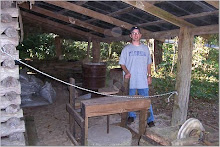Road Trips through History: A Collection of Essays from Preservation Magazine is a wonderfully orchestrated book. It is a collection of 114 essays containing the thoughts and memories of a preservationist by the name of Dwight Young. Young uses these essays as a way to take the reader into what he feels preservation is as a discipline. Young uses his essays to show the reader that history can be seen through out everyday life. He wanted people to seek history in the world not just in historical buildings, sites and museums but throughout the entire world. Young has done a masterful job with this collection of essays. In my opinion each essay was well written and kept me interested in the topic of historical preservation.
Young is truly committed to historical preservation and it shows in these essays. He also shows that he has a strong relationship with historic preservation. He makes historical preservation personal for the reader with emotional stories that pull the reader in, there by making the reader concerned with the topic of preservation. Young discusses about large historical objects and sites the same way he does over smaller lesser known items. In doing so he shows that no matter the object or it size if it is important to someone it is worth preserving. In doing so simply trying to remind the reader to take in the surroundings of the world because you never know what can be seen.
With this collection of essays Young has made preservation into a series of personal experiences. He uses his personal appeals and provides everyday examples of how historical preservation can be used. In my opinion in writing in this way Young has provided the reader a service by showing how preservationist work with several different techniques to show how thing are preserved. This book actually made me realize why people preserve certain items. I had never really though about historical preservation as a discipline until reading these essays. I had always though of it as some left up to museum curators or historians only. People preserve things that are important to them or that they believe are worth preserving and they do not have to work in a museum or be historians to do it.
This book is a great and is a must read for anyone interested in historical preservation because it helps to remind the reader of how important historical sites, artifacts, antiques, and other important items are for society today and how important it is to continue to work in preserving these things for future generations. I look at places here in Tallahassee and marvel because they are wonderful to visit. Places such as Goodwood, The Knot House, Riley House, and Mission San Luis and think how heart breaking it would be if they were gone and not left for others to enjoy. Visiting these places is like taking a visit back in time. It makes me want to get more involved in historical preservation in order to protect the past for the future.
The Final Frontier?
16 years ago
